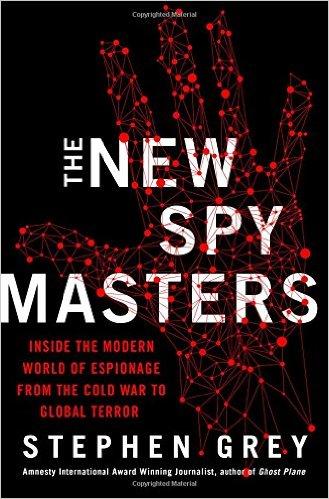 The New Spymasters: inside espionage from the Cold War to global terror, by Stephen Grey
The New Spymasters: inside espionage from the Cold War to global terror, by Stephen Grey
Despite the continuing value of intelligence methods like telecommunication interception and satellite imagery, when operating against a shadowy terrorist group—especially one hiding within a civilian population—one of the best sources an intelligence organisation can have is a trusted insider who’s prepared to reveal the inside workings of the target. The decades long Cold War allowed both sides to be patient in their efforts to recruit such sources. One of the most notorious spies of that era, Kim Philby was first recruited by the Soviets in the mid 1930s. Fifteen years later he was the leading British intelligence figure in the United States, responsible for liaison with the CIA.
But there’s an intrinsic uncertainty with human sources of intelligence. The Soviets were never sure about the bona fides of their agents in the west, and were deeply suspicious of the information they passed. The risk that an agent is actually a double—still loyal to their own nation or group while posing as an agent for an adversary—always hangs heavily. In 2009 the CIA and Jordan thought they’d found a well-placed al-Qaeda insider in Humam Khalil Abu-Mulal al-Balawi, only to have seven CIA staff killed when he detonated a suicide bomb at a CIA base in Afghanistan.
Stephen Grey’s well-researched book is a good primer in the tradecraft of human intelligence, or ‘humint’. It’s not an edifying business—ultimately a successful humint operation relies on someone being persuaded to betray their country, cause or friends. As a result, it’s a difficult ethical landscape, and both the agents themselves and their handlers face dilemmas in deciding where lines are drawn. As Grey describes, the relationship between the source and the handler works best when there’s a real bond between them—but that has to coexist with the intrinsically problematic reason for the pairing.
It’s not just the interpersonal aspects that are difficult. If the agent is inside a criminal and/or violent organisation, the agency running the operation has to decide how much criminality can be tolerated from their ‘asset’. British intelligence had to weigh the benefit of having a well-placed IRA informer (codenamed SteakKnife) against the acts that he had to be complicit in to maintain his cover. There are allegations that even murder was tolerated to keep SteakKnife’s cover intact.
The ‘classic’ spy like Philby or SteakKnife is allowed to work their way up in an organisation to be able to provide intelligence on the innermost workings and thinking of the leadership. In state-on-state intelligence that takes time, but climbing the hierarchy generally doesn’t involve involve the agent openly committing violent criminal acts. In the case of a violent organisation like the IRA, it gets harder, and the argument may have come down to the prevention of a ‘greater harm’.
Those issues perhaps become more problematic when the agent concerned is inside a terrorist group bent on inflicting mass casualties. Grey’s chapter on Jihad hints at a disturbing possibility that French intelligence was prepared to allow an inside source they were running within an extremist group to deliver a car bomb to a group in Algeria which ended up taking the life of 42 people. Given that western authorities have tended to take an approach of acting quickly to prevent terrorist attacks in their own countries whenever possible, even at the expense of blowing the cover of their intelligence sources, it’d be profoundly cynical to tolerate an act of mass murder elsewhere.
Grey’s main thesis is that humint successes like those in the Cold War or against the IRA can be replicated against even the most dangerous jihadist groups. He starts with a fair point: proselytising groups like al-Qaeda and ISIS welcome converts, so it should be possible to offer them some. Westerners have been able to get into those organisations, so it should be possible to place an agent. Of course it’s likely that’s already happening, but it’d be very dangerous work as ISIS gets increasingly paranoid about any traitors in the ranks.
Grey also takes issue with the west’s policy of pursuing a process of ‘decapitation’ of terrorist groups. Forcing them into a more cellular and less central structure reduces the strategic value of intelligence and the chance of getting an agent into a place to gather real insight. Grey also observes that the IRA wasn’t ‘decapitated’. Instead, its leadership aged and mellowed, and was eventually brought into a political process that helped end the problems. That won’t be possible if we keep rejuvenating the leadership with younger hotheads.
Grey concludes that intelligence against jihadists has ceased to be strategic. Rather than trying to understand the root causes of extremist movements, political leaders and their intelligence agencies have ‘become infected with a control-room mentality’. He quotes an intelligence agent as saying that the mission in Afghanistan was ‘not to understand the enemy but to defeat it’. By taking such a tactical view, we’ll probably end up doing neither. Practiced correctly, intelligence provides understanding at the strategic level and targeting data at the tactical level.